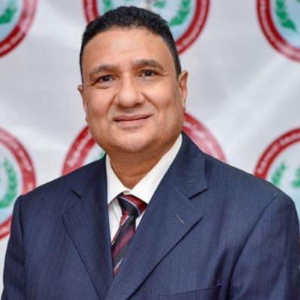Title : Distal metatarsal osteotomy through minimally invasive approach for mild-tomoderate hallux valgus deformity
Abstract:
Background: Hallux valgus is a common condition that affects the forefoot. A large number of procedures are described for managing this condition. The minimally invasive corrective surgery of static disorders of the forefoot is an undisputable progress because of its decreased morbidity with a simplified functional postoperative follow-up. The purpose of our study was to analyze the early results and to present our experience of minimally invasive distal metatarsal osteotomy in correcting mild-to- moderate hallux valgus deformities in adults.
Materials and Methods: A prospective study involved thirty-six feet in 24 patients (12 bilateral), aged between 17 and 52 years (mean age 37.8 years) with mild-to-moderate hallux valgus deformities were managed by the minimally invasive distal metatarsal osteotomies (MIDMO) between January 2020 and December 2021. Pain over the bunion due to footwear was the reason for surgery in all feet. Patients with hallux valgus angle (HVA) more than 17°and less than 40°[ first intermetatarsal angle (IMA) ≤ 18°] not responding to a trial of conservative treatment were included. Patients having metatarsophalangeal (MTP) joint osteoarthritis (Grade II and higher), hallux rigidus, rheumatoid arthritis, and those with previous surgery on the hallux were excluded from the study. A percutaneous distal linear osteotomy of the first metatarsal is performed and stabilized by a 2 mm Kirschner wire. Immediate weight bearing was allowed with gauze bandage. The patients were assessed with a clinical and radiographic protocol at a mean of 21 months postoperatively. The hallux metatarsophalangealinterphalangeal scale proposed by the American Orthopaedic Foot and Ankle Society (AOFAS) was used for the clinical assessment.
Results: The average follow-up period was 21 months (range 12–36 months).The patients were satisfied following 31 (86%) of the 36.procedures. The mean total score on the AOFAS scale was 91.1 ± 6.8 points. At the final follow-up the radiographic assessments of weight-bearing anteroposterior foot radiographs showed a significant change compared with the preoperative values, where the average corrections of hallux valgus angle (HVA) and the first intermetatarsal angle (IMA) achieved was 13.1° and 5.4°, respectively (p < 0.001). All osteotomies healed and there were no cases with nonunion, malunion, overcorrection, transfer metatarsalgia or osteonecrosis observed.
Conclusions: Minimally invasive distal metatarsal osteotomy offers an effective, safe and simple way for the correction of a painful mild-to-moderate hallux valgus deformity. Clinical and radiographic findings showed an adequate correction of the deformity. The clinical results appear to be comparable with those obtainable with traditional open techniques.




